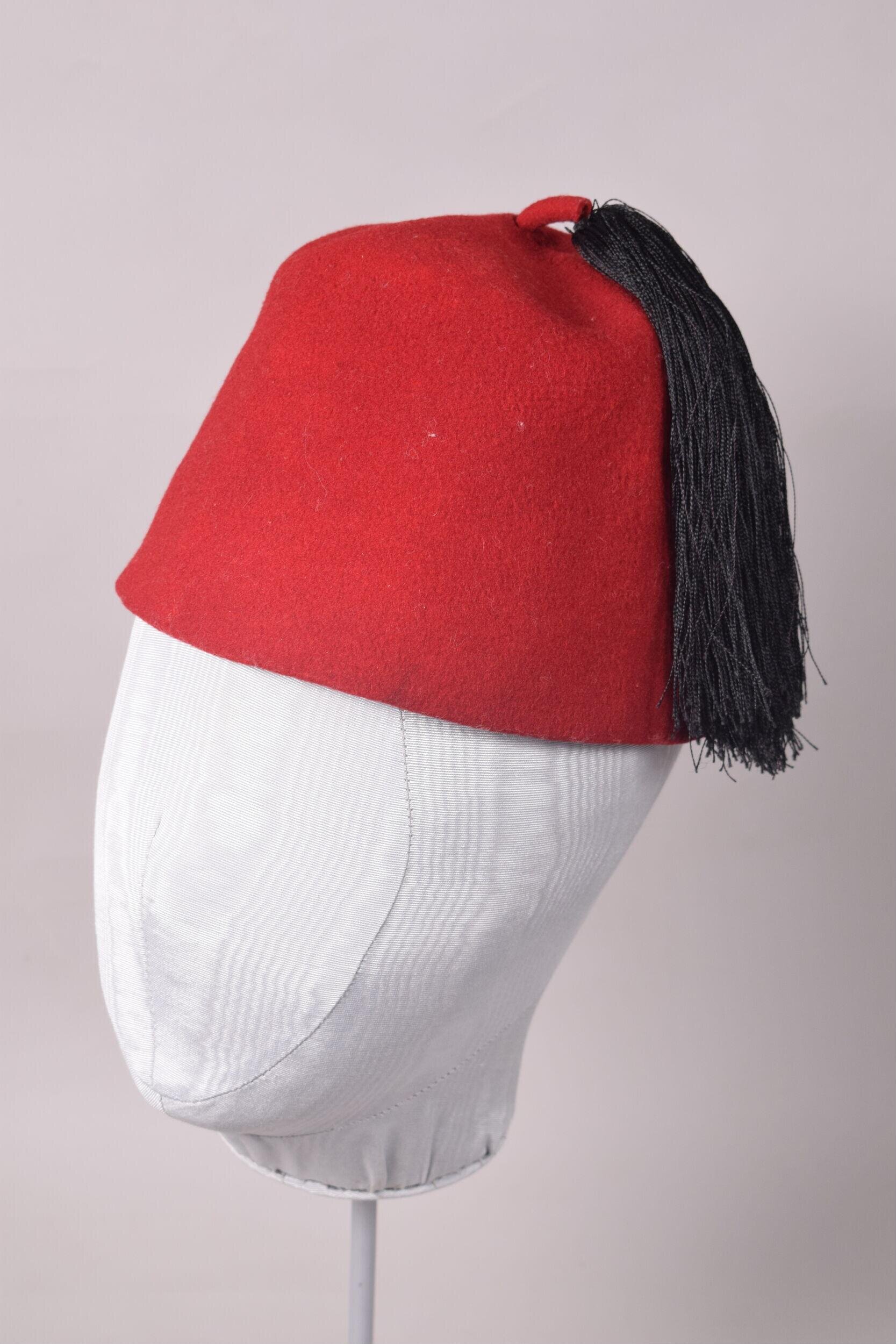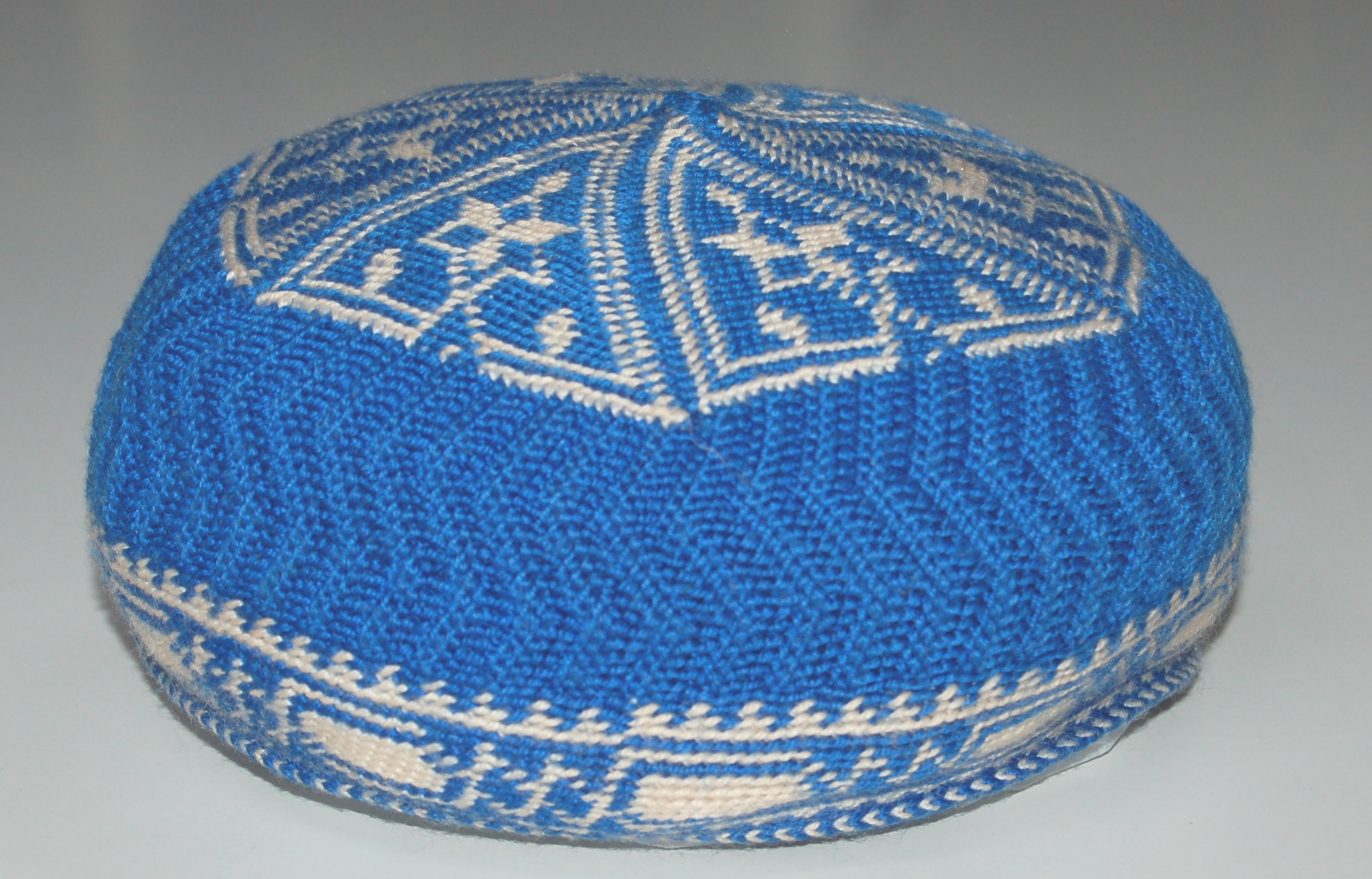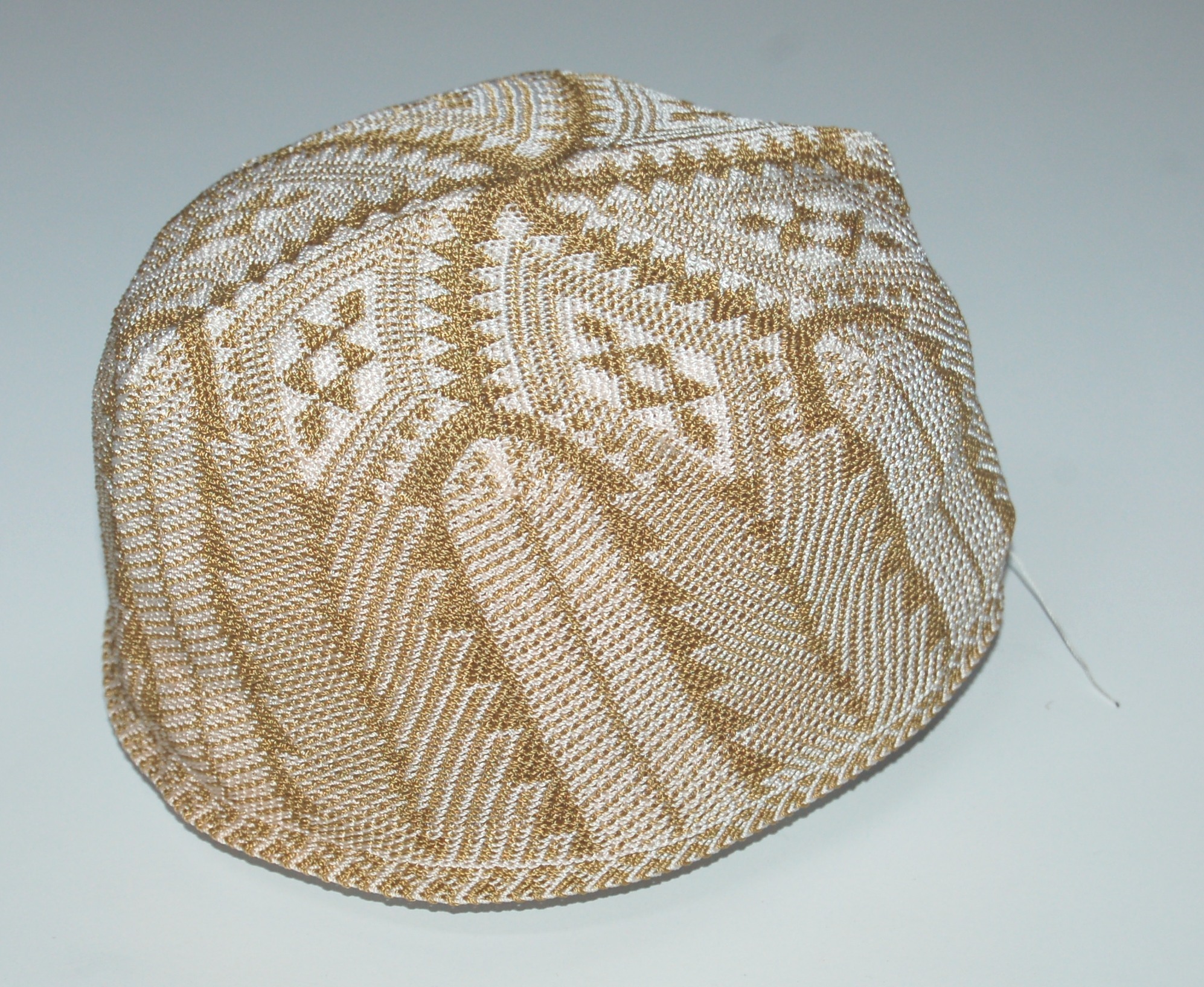Building on the analyses of traditional male attire in urban Morocco – particularly the garments and ensembles detailed in the studies of the previous two articles – part i and part ii – this installment focuses on the crucial yet often overlooked role of accessories in completing and signifying a man’s dress. Previous examinations have highlighted the jalābah (جلّابة), a hooded outer robe, and the şarwāl(سروال), voluminous trousers gathered at the ankles, as foundational garments within this sartorial tradition. Likewise, layered ensembles such as the Kiswah (كسوة), typically composed of the two waistcoats (bid’īyah – بِدْعيّة – and bid’īyah sulfah), the short jacket (mentān or kabūt – كبّوط), and a pair of voluminous trousers (şarwāl), exemplify the ceremonial elegance and structural complexity characteristic of urban Moroccan male dress.
Elements such as the tashāmīr – تشامير – (long shirts with wide sleeves) and the stately selhām – سلاهم – (a sleeveless, cape-like mantle), contribute further to the system of layering that defines this tradition. Each garment plays a specific role in denoting function, season, occasion, and social standing. However, these layers attain their full cultural resonance only when considered in concert with the accessories that accompany them – elements that, while not always emphasized in textual or visual records, are integral to the communicative grammar of dress. This study thus seeks to situate men’s accessories within the broader framework established by these garments, exploring their aesthetic, social, and semiotic functions in the context of traditional urban Moroccan attire.
This article offers a detailed investigation into the accessory components that accompany and enhance traditional urban Moroccan male attire, focusing in particular on those elements that adorn the head, torso, and lower body. Among these are the diverse forms of turbans and draped textiles worn across the shoulders and upper torso, which serve both utilitarian and symbolic functions. Head coverings such as the tāqīyah – g – (skullcap), the Fez (or tarboush), that are examined for their role in signalling religious observance, generational identity, and urban affiliation.
Equally significant are accessories worn around the waist, notably the hizām – a belt or sash that not only secures layered garments but also conveys subtle cues of rank, refinement, or occasion. The study further considers footwear, which varies in form and material, and serves as a critical indicator of both socio-economic status and regional specificity. Through an analysis of these components in relation to the ensembles previously discussed – such as the jalābah, qaftan, and Kiswah – this article situates men’s accessories as indispensable to the full expression of cultural identity within the traditional urban Moroccan wardrobe.
Accordingly, the analysis will be structured into four principal categories—headwear; scarves and other torso drapes; waistbands; and footwear—allowing for a systematic examination of these accessories in relation to their form, function, and cultural significance within the broader context of traditional urban Moroccan male dress.
Headwear:
To commence with headwear, four primary typological categories may be identified: first, the various forms of red felted caps, often associated with urban formality and status; second, the knitted skullcaps, typically worn as under-caps or in more informal and religious contexts; third, the variety of turbans, length of cloths expertly wrapped around the head, often indicative of religious scholarship, social standing, or regional affiliation; and fourth, the scarf, which functioned both as a head covering and as a versatile draping accessory, adaptable to a range of regional and situational norms.
Fez or Tarboush and Chachiyah / Chéchia
An Egyptian men’s tarboush; Title: Tasselled felt skull cap, Egypt, c. 20th century; Source: The Zay Initiative
This form of traditional brimless cap, typically constructed from felt or wool dyed in red or maroon, is distinguished by its high, flat-topped crown and is commonly referred to as the fez or tarboush. While it bears visual similarities to other regional head coverings, the fez is characterized by its structured form and formal connotations. Likely of Mediterranean provenance as believed by most scholars – appearing in regions such as Greece, North Africa, and Türkiye – it rose to prominence during the late Ottoman period, subsequently influencing the development of analogous caps across the Islamic world.
Although its origins remain debated it is indisputable that the dye and production in Fez made Morocco central to its identity. Its widespread adoption and adaptation underscored its role as both a cultural signifier and a legacy of Ottoman influence.
A Moroccan men’s fez; Title: Fez, Turkey (Türkiye), c. 1850-1899; Source: Young V&A
Typically associated with young, urban-dwelling men, the fez or tarboush – a term predominantly used in Egypt – embodied both stylistic and socio-cultural significance across various regions of the Mediterranean and North Africa. In the Moroccan context, this headwear is more commonly referred to as the fez, a nomenclature derived from the city of Fez, historically known for its production of the red dye extracted from local berries. While Jean Besancenot, the noted 20th century French artist and ethnographer, identified the fez as a Tunisian import into Morocco, scholarly consensus generally points to a broader Mediterranean origin, with possible roots in ancient Greek or Ottoman Turkish traditions.
Despite their shared formal characteristics – most notably the red felt construction and flat-topped crown – the tarboush and fez have, over time, evolved distinct regional variants. These variations were manifest in differences of shape, size, ornamentation, and mode of wear, allowing for their differentiation within the wider typology of traditional Moroccan male headwear. For those interested in the Egyptian tarboush and its contemporary socio-economic significance, a previous blog postoffers a more focused discussion on its evolving role in modern Egyptian society.
In the Moroccan context, the fez was frequently adorned with black silk tassels, adding a refined visual element to its otherwise austere form. While it was commonly worn on its own, particularly among the general populace, variations in its embellishment and mode of wear often corresponded to social and economic hierarchies.
Men of moderate means may have enhanced the fez with the addition of a single turban, typically wrapped over the cap to convey a sense of respectability and formality. In contrast, individuals of higher socio-economic status and public prominence may have incorporated a second turban – usually a length of fine muslin – wound into a voluminous coil, thereby signifying both wealth and elevated social standing. This multilayered approach to headwear underscores the role of the fez not merely as a utilitarian item but as a culturally encoded marker of identity and distinction.
A third social category in which the fez featured prominently was among maritime labourers, specifically seamen (bekhrīyah), for whom the headwear formed a regular component of their occupational dress. Typically attired in layered garments that together constituted the kiswah albekhrīyah – a variant of the previously mentioned formal kiswah ensemble – the bekhrīyah often omitted the outer robe, resulting in a distinctive configuration referred to as the kiswah al-bekhrīyah, or “seamen’s costume.”
Within this ensemble, the flat-topped fez was frequently worn and commonly enveloped by a turban, a sartorial choice that lent these men a striking resemblance to the Ottoman Janissaries. This visual parallel underscores the transregional currents of dress and identity in the wider Ottoman and post-Ottoman Mediterranean, wherein occupational and class-based sumptuary codes intersected with broader imperial and cultural aesthetics.
Thechéchia is a red felt, brimless cap bearing close formal resemblance to the fez, yet distinguished by its pointed crown. Unlike the flat-topped fez, the chéchia was traditionally associated with imperial or royal service, worn as an integral component of the official attire of makhzin (state or palace functionaries). Characteristically worn without a turban, except within the royal palace, the chéchia was often embellished with a dark blue silk tassel, enhancing its visual distinction and signalling its institutional affiliation. Its consistent presence within the ceremonial and administrative sphere affirmed its role as a marker of bureaucratic identity, setting it apart from other forms of headwear employed across social strata.
Tāqīyah
Amazigh men’s taqiyah made in Marrakesh; Title: Man’s skull cap crocheted from cotton yarn, Anti Atlas, c. 2011; Source: The British Museum
The tāqīyah is a small, rounded skullcap widely worn across Arab communities in the Middle East and North Africa, with numerous regional variants reflecting local aesthetic and cultural preferences. While commonly used by both men and women in various contexts, in Morocco the tāqīyah was most often encountered as a knitted wool skull cap traditionally associated with Amazigh (Berber) men. Among urban populations, individuals of means typically reserved the tāqīyah for indoor use, where it served both practical and modesty-related functions. By contrast, within the working-class communities, it was commonly worn as an everyday head covering, reflecting both its utilitarian value and its embeddedness in vernacular expressions of dress. The versatility of the tāqīyah across social and ethnic lines underscored its role as a culturally resonant yet adaptable element of headwear in the Moroccan landscape.
Amazigh men’s taqiyah made in Marrakesh; Title: Man’s skull cap crocheted from cotton yarn, Anti Atlas, c. 2011; Source: The British Museum
Thus, within the broader framework of traditional Moroccan urban dress, the strategic use of layered garments emerges as a subtle yet powerful means of delineating complex social hierarchies and cultural affiliations. Through variations in material, construction, and manner of wear, these layers encoded distinctions of class, occupation, regional identity, and generational belonging. In the subsequent segment, the analysis will shift focus to scarves, turbans and other forms of torso drapery that were prevalent among urban Moroccan men, examining their materiality, modes of adornment, and sociocultural significance within the continuum of male dress practices.




